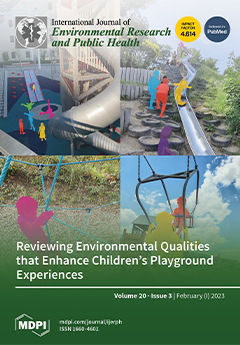Objective: To evaluate the effect of a multicomponent progressive training program (MPTP) on functionality, quality of life (QoL) and motivation to exercise (EM) in a group of older adults (OA) of a community. Methods: A total of 55 participants of 69.42 ± 6.01 years of age were randomized into two groups; experimental (EG:35) and control (CG:20), and subjected to 27 weeks of MPTP. Functionality (pre/post-intervention) was assessed using the Short Physical Performance Battery (SPPB), Time Up and Go (TUG), Walking While Talking Test (WWT), Manual Dynamometry (MD), Forced Expiratory Volume in the first second (FEV
1), Sit and Reach (SR), Back Scratch (BS), and walk for 2 min (2 mST). QoL was assessed using the SF-36 questionnaire and EM using the BREQ-3. The Kolmogorov–Smirnov and Levene tests were applied. A two-way repeated measures ANOVA was applied. A significance level of
p < 0.05 was accepted for all comparisons. Results: The EG compared to the CG improved in SPPB (ΔEG/CG: 29.67%/
p < 0.001), TUG (ΔEG/CG: 35.70%/
p < 0.05), WWT (ΔEG/CG: 42.93%/
p < 0.001), MD (ΔEG/CG: 20.40%/
p < 0.05), FEV
1 (ΔEG/CG: 21.37%/
p < 0.05), BS (ΔEG/CG: 80.34%/
p < 0.05), 2 mST (ΔEG/CG: 33.02%/
p < 0.05), SF-36 (ΔEG/CG: 13.85%/
p < 0.001), and Intrinsic Regulation (ΔEG/CG: 27.97%/
p < 0.001); Identified by regulation (ΔEG/CG: 9.29%/
p < 0.05). Conclusion: An MPTP improves functionality, QoL and EM, and is a safe and effective method for community OAs.
Full article





